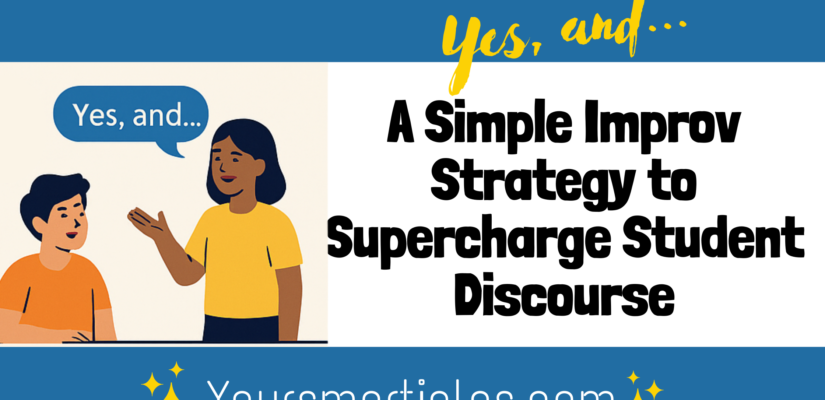
Say “Yes, And” to Science: A Simple Strategy to Supercharge Student Discourse
In my classroom, the buzz of curiosity is one of my favorite sounds. You know the one—when students are mid-discussion, bouncing ideas off each other, and suddenly someone lights up with “Oh! I never thought about it that way!” That moment is golden. And guess what? You can get more of it by borrowing a Yes, and strategy from improv theater.
Yep. Improv.
Enter: the “Yes, and…” strategy.
This simple phrase is a total game-changer when it comes to fostering meaningful, inclusive science discourse. It shifts students away from one-word answers. It also prevents quick shutdowns like “No, that’s wrong,” or the dreaded “I don’t know.” It opens the door to collaborative meaning-making.
Why “Yes, and…” Works
In improv, “Yes, and…” is all about accepting a partner’s idea and adding to it. In science class, it becomes a method for students to actively listen to each other. They build on each other’s thoughts. Here’s the big one: they construct explanations about phenomena together; and this is important! Talk as a Tool for Learning is a key concept in the book, Ambitious Science Teaching as it supports
Instead of feeling like a solo act, discourse turns into a shared performance. When one student says, “I think the ball moved faster because it had more force,” and another replies, “Yes, and maybe it also had less mass so it could speed up more,” we’re not just seeing engagement. We’re watching science in action.
How I Use It
Model It First
Like any classroom routine, I start by modeling. I take a student’s comment and respond with, “Yes, and…” to add a layer of thinking. Then I let them try it out—awkward at first, yes, but we lean into it.
Use It with Phenomena
During sensemaking discussions, especially those tied to NGSS phenomena, “Yes, and…” becomes our bridge. We ponder why a shadow changes size. We also explore what happens during a collision between two carts. This little phrase keeps the cognitive ball rolling.
Pair It with Sentence Starters
For some students, language can be a barrier to participating. I keep “Yes, and…” on an anchor chart. It sits next to other discussion stems like “I noticed…” or “That makes me think….” This is to scaffold their participation.
Make It the Norm, Not the Exception
We use it in lab debriefs, group CERs, even while constructing models. Students know their ideas have a place in our classroom—and they’re expected to make space for each other’s thinking, too.
What I’ve Noticed
When we center talk around building knowledge together, students who typically hang back begin to lean in. They stop looking for the right answer and start listening for each other’s ideas. It’s no longer about competition. It’s collaboration.
And that is how scientists work.
So yes, and… try it.
Try it in your next science discussion.
Try it in your partner talk.
Try it with your most reluctant speakers.
And watch what happens when your classroom starts sounding a little more like a team of scientists in the making.
Because once students feel like their voice matters in building explanations, they’ll want to keep showing up—and speaking up…
And as always, thanks for ✨Using Your Smarticles!✨
FREE ✨Smarticles!✨
Connect with ✨Your Smarticles✨ to get our latest content by email.